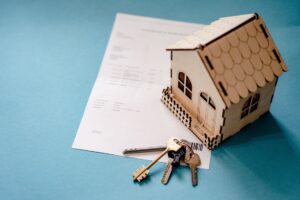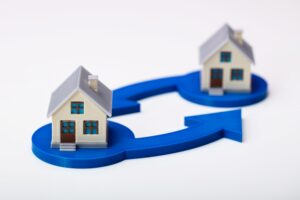When discussing the financials of a commercial real estate lease, CAM charges are a common topic of conversation. They play a major role in determining the NOI of a property and the rent a tenant is willing to pay for occupancy, making them an integral part of any real estate lease. So, what is CAM in real estate?
What Is CAM in Real Estate?
The acronym CAM in real estate refers to Common Area Maintenance. CAM charges are the annual or quarterly expenses related to the operation, insurance, and property taxes on common areas. Tenants make these payments to landlords to help cover the cost of maintaining common spaces. They are commonly included in leases for commercial space in multi-tenant properties.

Generally, the lease will clarify CAM costs to remove any uncertainty about what is included in this category of expenditures. However, they differ from market to market and even within the same area from one landlord to the next. Since there is no consensus on what exactly these charges include, it is crucial to have a clear understanding of these costs before signing a new lease.
Expenses Included in CAM for Commercial Real Estate
A commercial lease contract includes and specifies a great deal of information. CAM fees often cover the full scope of expenses associated with fixing, cleaning, and maintaining the leased property’s shared spaces.
Landlords and tenants can negotiate exactly what expenses will be covered by CAM fees, however, it will be based on the terms of their lease. These fees may just apply to a select few objects, or they may extend to pay the full cost of maintaining the property. On the other hand, there are some fixed expenses, including:
- Property maintenance
- Sidewalks
- Administrative fees
- Parking lot maintenance
- Lawncare and landscaping
- Snow removal
- Exterior building repairs
- Utilities for common areas
- Hallways
- Shared bathrooms
- Elevators
- Security systems and services
How CAM Is Calculated
There are a few options available to landlords for passing CAM expenses to tenants. Some approaches are intended to be straightforward, while others call for more intricate accounting. What constitutes a reasonable CAM charge for a given property and owner will vary from case to case. Here are the ways of calculating CAM charges:

Pro Rata Basis
Common area maintenance fees are often allocated among tenants based on their proportionate part of the building’s total square footage. The rent that each tenant is responsible for is proportional to the space they use in the building.
The cost of CAM can be expressed as a cost per square foot (PSF) by dividing the entire CAM cost by the total square footage of the property. The pro rata basis is one of the most typical ways in which tenants are charged CAM fees. It cushions the landlord against price changes and keeps the tenant’s lease rate down.
Load Factor
Some leases incorporate CAM costs into the monthly payment by including a percentage of the common area’s rent, the load factor, in the monthly payment. The square footage of leased space is increased by the load factor’s calculation of the fraction of the building used as common areas.
This is the rentable square footage, which is used to calculate the monthly fee. For example, a tenant is paying around 12% as a load factor if they are paying rent based on 5,000 rentable square feet and are only using 4,400 feet of that space.
Fixed CAM Charges
There has been a recent trend toward including fixed CAM charges in commercial real estate agreements. Based on the demand of anchor tenants, several property owners are streamlining their CAM fee structure by transitioning to flat CAM costs.
When it comes to these fixed charges, property owners incorporate a yearly CAM charge into the lease. To make money in commercial real estate, property owners will often set a flat rate for tenants to pay and then increase it slightly every year to account for inflation.
Capped Charges
In some arrangements, property owners can reach an agreement with tenants to put a cap on the CAM fees that can be charged to them. Tenants can rest assured that their lease costs won’t skyrocket or contain any unpleasant surprises if CAM fees are capped at a predetermined amount. As a result, the landlord takes on more financial risk by having to foot the bill for these costs.

Tenant-Landlord Agreements
Ultimately, the charges in any lease are subject to the agreement reached between the tenant and the landlord. These charges may be determined in a manner that differs from that specified in the lease agreement of a present tenant of the property, provided the circumstances warrant it.
Landlords sometimes offer “abatements” to tenants in which they temporarily reduce or eliminate their CAM expenses. Abatements can range from a simple reduction to a complete waiver of the charges.
If you are looking to set up the CAM structure of your commercial property, it is best to work with commercial real estate experts like Si Vales Valeo Real Estate. We have vast experience in advising and handling commercial real estate transaction steps. We are your best shot if you want to invest in commercial real estate properties in Cincinnati MSA.
Related Questions
Are CAM Charges Reassessed Each Year?
Yes, CAM charges are assessed every year in quite a number of instances. Since landlords often estimate the charges for the year, monthly or quarterly reconciliations or reassessments help ensure tenants are paying the correct amount.
Where Are CAM Charges in a Commercial Lease?
The lease abstract of a commercial lease is where the charges will be listed. A lease abstract is a condensed version of a full lease that includes key terms and conditions such as the lease term, any renewal options, any rent hikes, any parking requirements, and any CAM charges.
Conclusion
Common area maintenance (CAM) is just one of the many terms you can encounter when researching and dealing with commercial property investments or leases. Before entering into a deal with your tenants, you want to make sure that all your paperwork is perfect including CAM charges. A clear understanding of CAM structures will help you maintain your buildings effectively.






